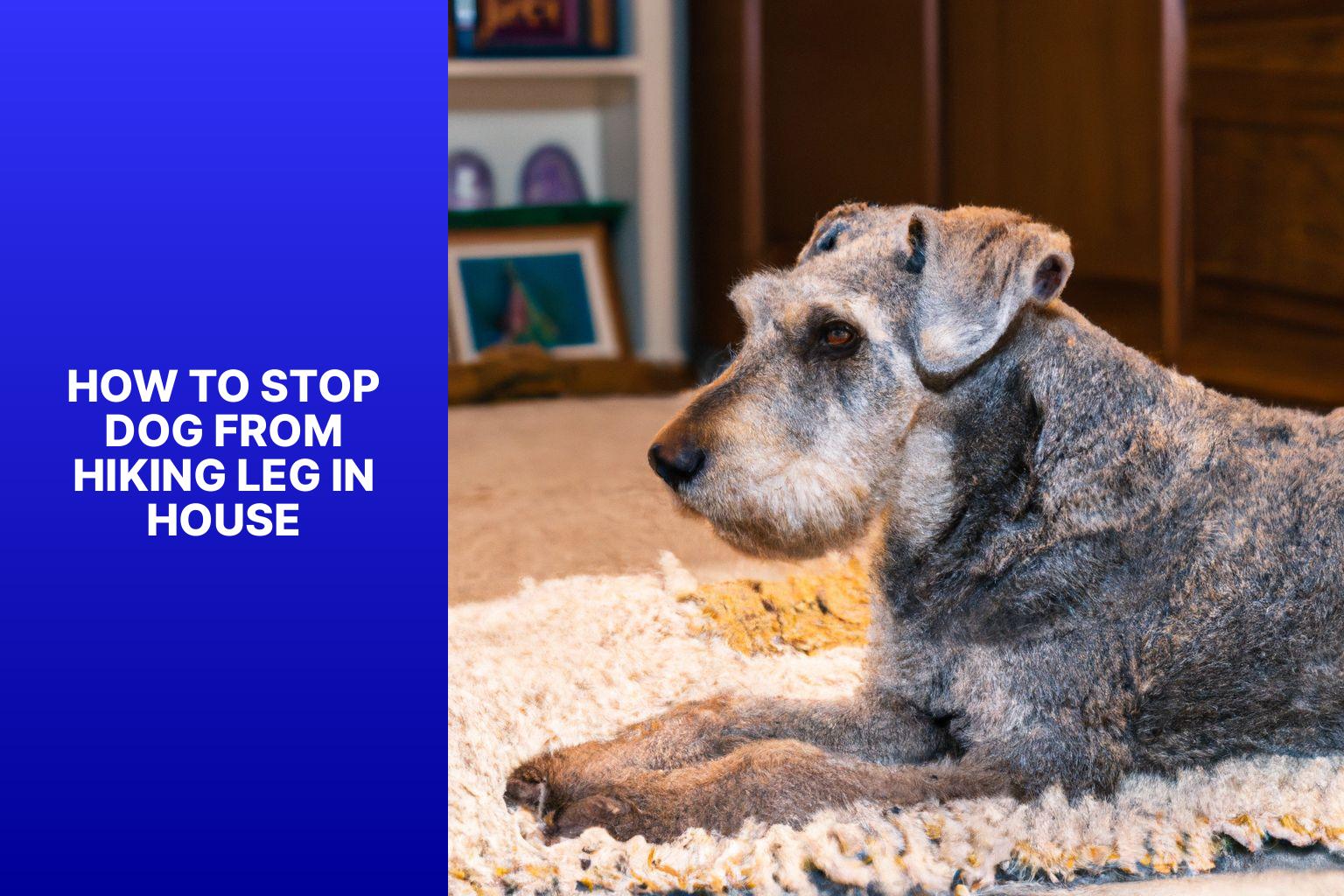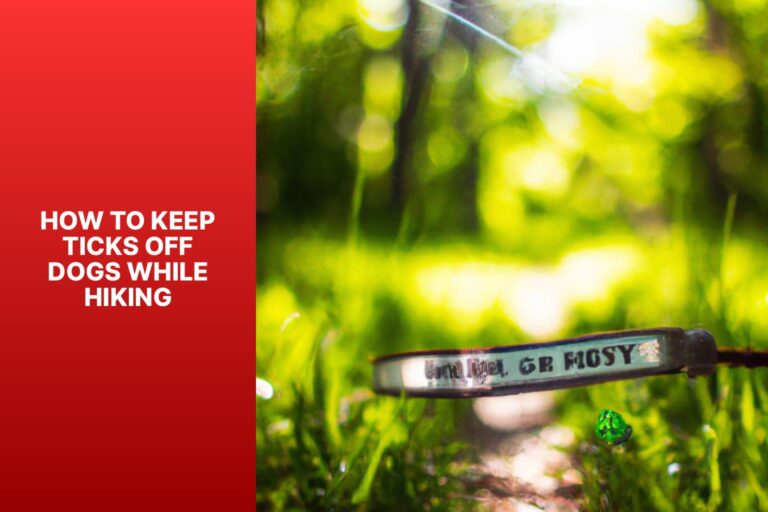How to Stop Dog From Hiking Leg in House
Dogs hiking their leg in the house can be a frustrating and challenging behavior to address. Understanding why dogs exhibit this behavior is crucial in finding effective solutions. There are several reasons behind leg hiking behavior, as discussed by renowned dog behaviorist, Cesar Millan.
1. Marking Territory: Leg hiking is often a way for dogs to mark their territory and communicate their presence to other dogs or animals.
2. Dominance or Assertive Behavior: Some dogs may hike their leg to assert dominance and establish their position within the household or in response to perceived threats.
3. Inadequate House Training: Leg hiking can also be a result of insufficient house training, where dogs have not learned the appropriate places to relieve themselves.
To stop your dog from hiking its leg in the house, proactive measures should be taken. Neutering or spaying your dog can help reduce hormonal urges and decrease marking behaviors. Reinforcing house training through positive reinforcement techniques is essential to establish appropriate bathroom habits. Providing frequent outdoor bathroom breaks and cleaning scent marks thoroughly can deter leg hiking behaviors.
Positive reinforcement training, such as rewarding good behavior and redirecting your dog’s attention away from leg hiking, can also be effective. Seeking professional help may be necessary for more severe or persistent cases. Consultation with a veterinarian can address any underlying medical issues, while the services of a professional dog trainer can provide expert guidance and tailored solutions.
By understanding the reasons behind leg hiking behavior and implementing appropriate training techniques, you can effectively address this behavior and create a harmonious living environment for both you and your dog.
Key takeaway:
- Dogs hike their leg in the house for various reasons: Marking territory, asserting dominance, or due to inadequate house training.
- To stop your dog from leg hiking in the house: Neuter or spay your dog, reinforce house training, provide frequent outdoor bathroom breaks, clean and remove scent marks, and use positive reinforcement training methods.
- If the problem persists, seek professional help: Consult with a veterinarian and enlist the services of a professional dog trainer.
Why Do Dogs Hike Their Leg in the House?
Dogs hike their leg in the house to mark their territory and communicate with other dogs. This is mainly seen in sexually mature male dogs. By lifting their leg and urinating, they leave a scent with pheromones that sends messages to other dogs.
There are a few reasons why dogs mark their territory indoors. One reason may be limited access to outdoor marking opportunities, such as a yard or walks. In these cases, dogs may feel the need to mark indoors to establish their presence.
Another reason may be anxiety or stress. Dogs may mark indoors when they feel insecure or threatened, creating familiarity and security in their environment.
It’s important to know why do dogs hike their leg in the house. Not all dogs will engage in this behavior. Some may never hike their leg in the house, while others may do it occasionally or frequently. Each dog is unique and influenced by factors such as breed, upbringing, and temperament.
To address this behavior and understand why do dogs hike their leg in the house, provide proper outdoor marking opportunities like regular walks and access to a designated area in the yard. Reinforce positive behavior when the dog urinates in appropriate locations. If the behavior continues or becomes a problem, consult a professional dog trainer or behaviorist for tailored guidance and solutions.
Understanding the Reasons behind Leg Hiking Behavior

Photo Credits: Jasonexplorer.Com by Bradley King
Why do dogs hike their leg in the house? Let’s dig into the reasons behind this peculiar behavior. From marking their territory to displaying dominance or assertiveness, there are various factors that contribute to leg hiking. We’ll also explore how inadequate house training can play a role in this behavior. Get ready to unveil the mysteries of leg hiking and gain insights into your furry friend’s mindset!
Marking Territory
Dogs naturally mark their territory by leg hiking, a behavior that allows them to leave their scent and communicate with other dogs. Understanding the reasons behind this behavior can help dog owners address it.
1. Social Order: Dogs use marking territory to establish their social order and claim their space, especially dominant or assertive dogs.
2. Mating Availability: Unneutered male dogs may leg hike to signal their availability for mating and attract potential mates.
3. Inadequate House Training: Dogs that are not properly house trained may resort to leg hiking indoors because they have not learned the appropriate place to eliminate.
To stop your dog from marking territory in the house, consider these suggestions:
1. Neuter or Spay Your Dog: This can reduce hormone-driven behaviors, including marking territory.
2. Reinforce House Training: Consistent and positive reinforcement training can teach your dog appropriate bathroom behaviors and reinforce the idea that eliminating is only done outside.
3. Provide Frequent Outdoor Bathroom Breaks: Give your dog ample opportunities to go outside to eliminate, especially after meals and naps.
4. Clean and Remove Scent Marks: Thoroughly clean areas where your dog has marked to discourage repeat behavior in the same spot.
5. Use Positive Reinforcement Training: Reward your dog with treats, praise, and attention when they eliminate outside. This can help reinforce the desired behavior.
If you’re having difficulties, consider consulting a veterinarian or professional dog trainer for guidance and support. Consistency and patience are key to addressing this behavior. With proper training and understanding, you can help your dog learn appropriate bathroom habits and reduce marking territory indoors.
Dominance or Assertive Behavior
1. Some dogs may exhibit dominance or assertive behavior by hiking their leg in the house.
2. This specific behavior is commonly seen in intact male dogs as they mark their territory to assert dominance.
3. While less common, female dogs can also display dominance or assertive behavior in the same manner.
4. It is important to differentiate between this marking behavior and inadequate house training.
5. Dogs displaying dominance or assertive behavior will also exhibit other signs such as growling, resource guarding, and challenging others.
6. To help address dominance or assertive behavior, neutering or spaying the dog can reduce hormone levels.
7. One can redirect this behavior by reinforcing house training and ensuring frequent outdoor bathroom breaks.
8. It is crucial to clean and remove scent marks to prevent the dog from returning to the same spot.
9. Addressing dominance behavior can be achieved through positive reinforcement training methods.
10. If the case is severe, it is advisable to seek advice from a veterinarian or professional dog trainer.
Fact: Dominance or assertive behavior in dogs can be influenced by genetics, early socialization, and the dog’s perception of its social order within the household.
Inadequate House Training
Inadequate house training can result in dogs marking their territory indoors. This issue is more common in unneutered or unspayed dogs, as hormones have a role to play. Inadequate house training can also be caused by routine changes or major life changes.
To tackle this problem, it is important to follow these steps:
- Consistently reinforce house training by regularly taking the dog outside to their designated bathroom area and offering positive reinforcement.
- Provide frequent bathroom breaks, particularly after meals or naps.
- Discourage the dog from marking by cleaning and eliminating scent marks indoors.
- Utilize positive reinforcement training methods to redirect the dog’s behavior.
- If the problem persists, it is advisable to seek help from a professional dog trainer or veterinarian who can provide guidance and resources.
- With patience, consistency, and proper training, it is possible to overcome inadequate house training.
How to Stop Your Dog from Hiking its Leg in the House?
Tired of dealing with your furry friend marking their territory indoors? We ve got you covered! In this guide, we ll show you effective ways to put a stop to your dog’s leg-hiking antics. From the importance of neutering or spaying your dog to reinforcing house training, providing outdoor bathroom breaks, and cleaning scent marks, we’ve got all the tricks you need. Get ready to create a harmonious environment and enjoy a stress-free, odor-free home with your beloved canine companion!
Neuter or Spay Your Dog
Neutering or spaying your dog is a crucial step to address various behavioral issues, including leg hiking behavior. This procedure helps reduce the levels of testosterone in male dogs and eliminates heat cycles in females, curbing the urge to mark territory. Neutering or spaying also plays a vital role in decreasing dominance or assertive behavior, fostering a harmonious social order within your household.
Aside from its behavioral benefits, neutering or spaying can contribute to the overall well-being of your dog. It aids in alleviating potential health concerns such as urinary tract infections caused by urine marking. By doing so, it ensures a healthier and more pleasant environment at home, free from any unwanted odors.
It is important to note that neutering or spaying alone may not guarantee the resolution of all behavioral issues. Other factors, such as improper house training or changes in routine, can also contribute to leg hiking behavior. Therefore, consistency in reinforcement training and maintaining a structured routine are essential in effectively addressing this issue. If leg hiking behavior persists despite these efforts, it is advisable to seek guidance from a veterinarian or enlist the services of a professional dog trainer. By combining neutering or spaying with appropriate training, you can successfully prevent leg hiking behavior and foster a well-behaved and balanced dog.
Reinforce House Training
To effectively reinforce house training in your dog and prevent leg hiking behavior, follow these steps:
- Establish a consistent routine for bathroom breaks. Take your dog outside to designated bathroom areas at regular intervals throughout the day, such as after meals or naps, after waking up, and before bedtime.
- Supervise your dog indoors. Watch your dog closely, especially when they are not fully trained. This will help you catch signs that they need to go outside and redirect them accordingly.
- Reward your dog for eliminating outside. Give them treats, praise, and affection each time they go outside. This positive reinforcement will reinforce the desired behavior.
- Handle accidents calmly. If your dog has an accident indoors, avoid punishment as it may cause fear and confusion. Instead, calmly clean up and be more vigilant in supervision.
- Use confinement when necessary. If you can’t directly supervise your dog, confine them to a safe area like a crate or a small room with easy-to-clean floors. This will reduce the chances of accidents.
- Be patient and consistent. House training takes time and persistence. Stick to the routine, reinforce positive behavior, and remain patient throughout the learning process.
By following these steps, you can effectively reinforce house training and discourage leg hiking behavior in your dog.
Provide Frequent Outdoor Bathroom Breaks
When it comes to curbing your dog’s leg hiking behavior, providing frequent outdoor bathroom breaks is essential. Here are reasons why:
1. Establish a routine: Taking your dog outside regularly helps them develop a predictable schedule. This routine makes it easier for them to understand when and where to relieve themselves.
2. Stimulate physical and mental health: Frequent outdoor bathroom breaks allow your dog to exercise and explore. This stimulation can reduce their urge to mark territory indoors.
3. Reinforce house training: Consistently taking your dog outside to go to the bathroom reinforces their house training. When they are consistently rewarded for going outside, they will be less likely to mark indoors.
4. Prevent accidents: Taking your dog outside frequently reduces the chances of indoor accidents. Dogs naturally avoid soiling their living spaces, so providing outdoor opportunities helps them avoid marking indoors.
In addition to frequent outdoor bathroom breaks, positive reinforcement training techniques can also effectively stop leg hiking behavior. Be patient and consistent, and consult a veterinarian or professional dog trainer for guidance.
Next time you notice leg hiking behavior, prioritize frequent outdoor bathroom breaks to curb this behavior and promote better house training.
Clean and Remove Scent Marks
To stop your dog from marking indoors, it is necessary to clean and remove scent marks. Follow these steps:
1. Identify the areas: Find where your dog has marked indoors using your sense of smell or a UV light to locate hidden or dried urine spots.
2. Clean the area: Use an enzymatic cleaner designed for pet urine to thoroughly clean the affected areas. Enzymatic cleaners break down urine enzymes, eliminating odor and discouraging re-marking.
3. Remove scent marks: In addition to cleaning, eliminate scent cues that may encourage your dog to mark again. Consider using a deterrent spray or wipe with unattractive scents like citrus or vinegar on previously marked areas.
4. Neutralize odors: If you have carpets or upholstery, use a carpet cleaner or steam cleaner to deep clean and neutralize any remaining odors. This helps remove residual scent that could trigger marking.
5. Implement positive reinforcement: After cleaning and removing scent marks, redirect your dog’s behavior and reward appropriate elimination outside. Use positive reinforcement techniques such as treats and praise to reinforce good potty habits.
I had a small dog that consistently marked indoors, causing problems. After following the steps above, including cleaning and removing scent marks, I noticed a significant improvement in his behavior. By consistently reinforcing good habits and eliminating lingering odors, he learned to associate outdoor elimination with positive rewards. Now, he rarely has accidents indoors, and our home smells fresh and clean.
Use Positive Reinforcement Training
To stop leg hiking behavior in dogs, it is recommended to utilize the method of positive reinforcement training. Here are some strategies that can be implemented:
- Utilize rewards: To reinforce the desired behavior, make sure to reward your dog with treats, praise, or play when they refrain from leg hiking or eliminate outside.
- Maintain consistency: It is crucial to consistently reward your dog for exhibiting the desired behavior. This will help them understand the expectations and encourage appropriate actions.
- Redirect attention: In cases where your dog displays signs of leg hiking indoors, redirect their attention towards more appropriate behaviors. This can be done by calling them to you, offering a toy, or engaging them in a game.
- Establish clear cues: Teach your dog clear cues or commands that indicate they should not partake in leg hiking indoors. Implement simple and consistent verbal commands such as “No leg hiking” or “Outside”.
- Exercise patience and repetition: Remember that changing behavior takes time and patience. It is important to remain consistent and regularly employ positive reinforcement techniques to help your dog comprehend the desired behavior.
By employing positive reinforcement training, it is possible to effectively stop leg hiking behavior indoors. Always remember to reward desired behavior and maintain patience as you modify their behavior.
Seeking Professional Help
If you’re at your wit’s end trying to figure out how to stop your dog from hiking their leg in the house, it might be time to seek some professional help. In this section, we’ll explore two avenues you can take to address this issue. First, we’ll discuss the benefits of consulting with a veterinarian, who can provide expert guidance and potential medical solutions. Then, we’ll dive into the advantages of enlisting the services of a professional dog trainer, who can work with you to modify your dog’s behavior effectively. Let’s get started on finding a solution together!
Consult with a Veterinarian
Consulting with a veterinarian is essential to address the issue of your dog hiking its leg in the house. A veterinarian will conduct a thorough examination of your dog to rule out any possible medical issues. They can also provide guidance on how to deal with medical problems that may be contributing to your dog’s indoor urination.
In addition, veterinarians can offer advice on modifying behavior and implementing training techniques to discourage leg hiking. They will provide personalized recommendations tailored to your dog’s specific needs.
It’s important to emphasize that consulting with a veterinarian should be done in conjunction with other strategies mentioned in the article. A comprehensive approach that addresses both medical and behavioral factors is crucial in effectively stopping this unwanted behavior.
Enlist the Services of a Professional Dog Trainer
Enlist the Services of a Professional Dog Trainer
If your dog hikes its leg in the house, hiring a professional dog trainer can be highly beneficial. Here are some reasons why:
- Expertise: Professional dog trainers understand dog behavior and can identify the reasons behind leg hiking. They develop tailored training plans to address the issue.
- Behavior Modification Techniques: Trainers use effective techniques to reshape your dog’s behavior. They can reduce dominance, correct inadequate house training, and redirect marking behavior to appropriate outdoor areas.
- Personalized Training: A professional trainer assesses your dog’s situation and provides personalized sessions. They consider factors like age, breed, and personality to tailor the training program.
- Consistency and Accountability: With professional guidance, you ensure consistent training methods. Trainers hold you accountable for implementing strategies and help you stay on track.
- Problem-Solving: If leg hiking behavior is challenging or previous methods failed, a professional trainer offers fresh insights and alternative approaches.
Remember, enlisting a professional dog trainer provides the expertise, guidance, and support needed to address leg hiking behavior successfully.
Frequently Asked Questions
How can I stop my dog from hiking its leg in the house?
Dogs marking their territory inside homes can be a frustrating and disgusting habit. Here are some steps to help stop this behavior:
- Restrict your dog’s freedom within the house by using leashes, crates, or baby gates to limit its roaming area.
- Prevent access to favorite marking spots unless the dog is under supervision.
- If you notice your dog sniffing or about to lift its leg to mark, make a loud noise to startle it and take it outside on a leash.
- If the dog successfully marks outside, praise and reward it to reinforce the desired behavior.
- Gradually reintroduce freedom, but if the dog makes a mistake, restrict its freedom for a longer period.
Why does my dog mark territory on upright surfaces?
Dogs mark their territory with urine on upright surfaces, such as furniture or walls, to communicate messages to other dogs. This behavior is a natural instinctive behavior and can be caused by a variety of reasons, including social order, territorial ownership, or mating availability.
Is marking behavior a dominance issue?
Marking territory can be a sign of dominance or insecurity in dogs. It is more common in male dogs that are not neutered, but female dogs can also engage in marking behavior.
Can neutering my male dog help prevent marking behavior?
Neutering can help prevent marking behavior in most dogs, especially in male dogs. It may not be effective for older dogs or those with established marking habits.
How should I clean up accidents to discourage marking?
To discourage marking, it is crucial to clean all accidents thoroughly using an enzyme-based cleaner to remove the dog’s odor. Avoid using ammonia-based cleaners, as they can actually attract dogs to mark in the same spot.
Should I punish my dog for marking inside the house?
No, punishing your dog for marking inside the house is not effective and can make the problem worse. Dogs may not associate the punishment with the marking behavior, and it can increase their anxiety and insecurity, leading to more marking. Positive reinforcement and redirecting the behavior to acceptable outdoors marking should be used instead.







